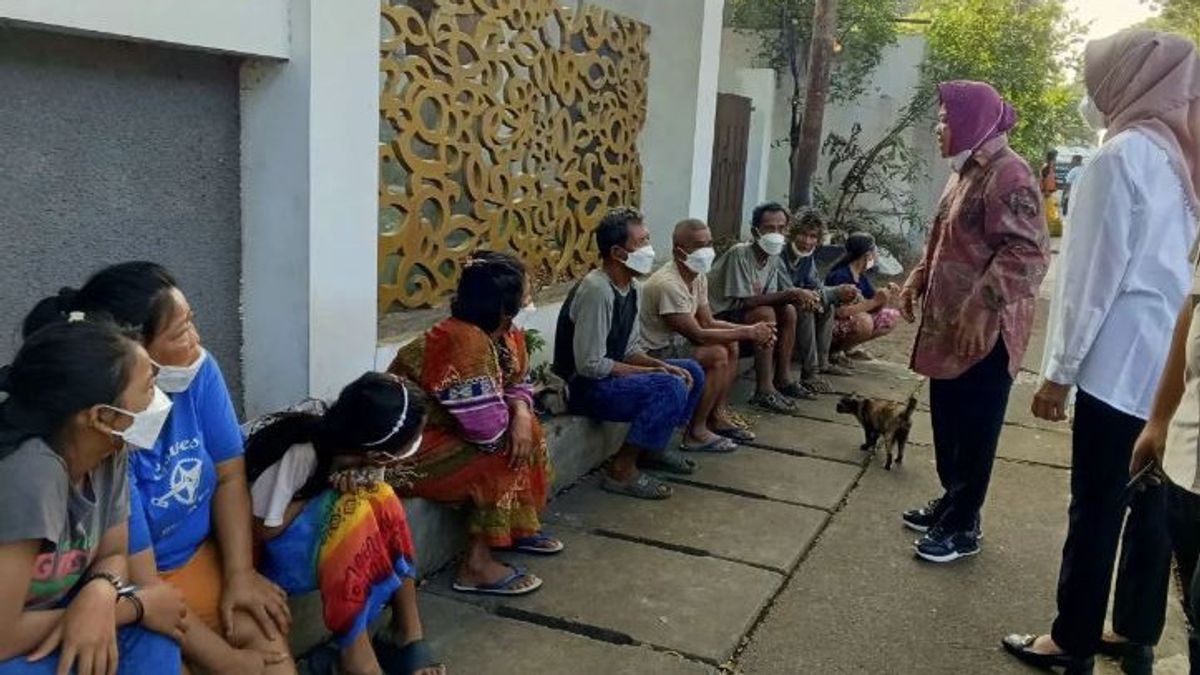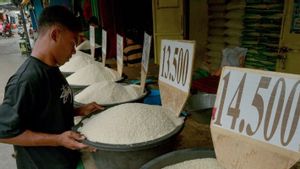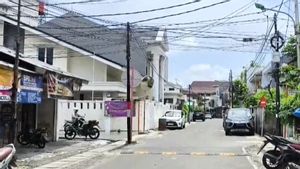JAKARTA High rice prices make it increasingly difficult for poor consumers in Indonesia to buy nutritious food. In fact, nutritious food intake is expected to be able to produce quality generations towards Indonesia Gold 2045.
The World Bank said the price of rice in Indonesia is 20 percent more expensive than the big price in the global market. In fact, domestic rice prices are the highest in the ASEAN region. The Head of the World Bank Representative for Indonesia and Timor Leste,koal Turk explained several reasons for the high price of rice in Indonesia, one of which was government policies related to non-tariff import restrictions.
The high price of domestic rice has a more serious impact on the wider community. According to World Bank records, currently only 31 percent of Indonesians are able to get healthy food, because of the difficulty of buying nutritious food such as meat, eggs, fish, and vegetables.
"The high price of rice makes it even more difficult for poor consumers in Indonesia to buy nutritious food," said fire.
Therefore, according to him, the increase in rice prices should be a concern for all stakeholders because Indonesia has ambitions to become a developed country in 2045 or Indonesia Gold.
Regarding the difficulties of Indonesian citizens getting nutritious food is actually not new news. In 2022, more than half of Indonesia's population, around 183.7 million people or 68 percent of the population, including the group, will not be able to meet daily nutritional needs. This is said to be due to the highest cost of healthy food in Indonesia in Southeast Asia.
This is stated in the report of the Food and Agriculture Organization (FAO). By taking into account the purchasing power purchasing factor (PPP), the nutritious food price in Indonesia reached US$4.47 at around Rp. 69,000 per day. This is higher than: Thailand (US $ 4.3); Philippines (US $ 4.1); Vietnam (US $ 4) and Malaysia (US $ 3.5).
Meanwhile, the World Bank standard stipulates that the maximum expenditure for food is 52 percent of the total family expenditure.
For information, balanced nutrition means a menu with a balanced portion between carbohydrate staple foods (sources), side dishes (sources of protein and fat), vegetables and fruit, and drinking water.
Launching Kompas, there is a strong correlation between the proportion of residents who are unable to buy balanced nutritional food with the prevalence of the tengkes or stunting province. The fewer residents in the area who are able to meet the daily balanced nutrition, the higher the risk of tengkes children in the area.
SEE ALSO:
By comparing the prices of food commodities recorded by the Central Statistics Agency (BPS) in 2021, nutritious food costs were found throughout Indonesia.
An example is the Province of East Nusa Tenggara (NTT). The cost of balanced food costs is IDR 19,173 per day or IDR 575,192 per month. Of this cost, around 78 percent or 4.37 million people whose economic levels are classified as unable to afford balanced nutritional food.
With this figure, NTT ranks at the top of the province with the proportion of the population unable to afford the largest balanced nutritional food in Indonesia. The 2021 Indonesian Nutrition Status Study (SSGI) survey also places NTT as the province with the highest prevalence of tengkes at 37.8 percent.
What happened in NTT is an example that poverty has a correlation with people's ability to meet nutritious food needs.
However, the difficulty of obtaining nutritious food is not only experienced by local people. When urbanization becomes a global phenomenon, data from the UN Department of Economic and Social Affairs or UN VILLAGE currently records as much as 55 percent of the global population living in urban areas and by 2050 it is predicted that 70 percent of the population will live in cities.
Urban areas do have greater social and economic developments, more job opportunities, as well as access to more diverse and good important services. But on the other hand, the United Nations Development Program Agency (UNDP) says urban areas are centering poverty.
This is because of the advantages and potential of urban areas which are expected not to be evenly distributed because they do not reach the poorest socio-economic strata. UN VILLAGE estimates that by 2035 most people who are in extreme poverty (daily income less than 1.25 US dollars) will live in urban areas. This challenge has been discussed in the Purpose of Sustainable Development or SDG, one of which is about food insecurity.
Urban environments imply certain risks of poor food and nutrition as access to food relies on commercial supplies which, in turn, are related to income levels.
The poor in urban areas have difficulty accessing the choice of healthy food. Therefore, those who are low-income do not have access to nutritious food including fresh fruits and vegetables, tubers, and nuts. But on the other hand, they have relatively easier access to consuming sugar, fat, and ultra-processed foods.
The price of healthy food in the city will be higher in poor environments compared to those who earn above average. City people with a fast lifestyle encourage people to eat ultra-processed foods with high calorie, fat, salt, and sugar content but the nutritional value is very low. Apart from being easy to obtain, this ultra-processed food is also considered cheaper than balanced nutritious food in urban areas.
If the World Bank's statement regarding only 31 percent of Indonesians who are able to reach nutritious food is not immediately addressed, then the 2045 Golden Indonesia target needs to be questioned.
The English, Chinese, Japanese, Arabic, and French versions are automatically generated by the AI. So there may still be inaccuracies in translating, please always see Indonesian as our main language. (system supported by DigitalSiber.id)













